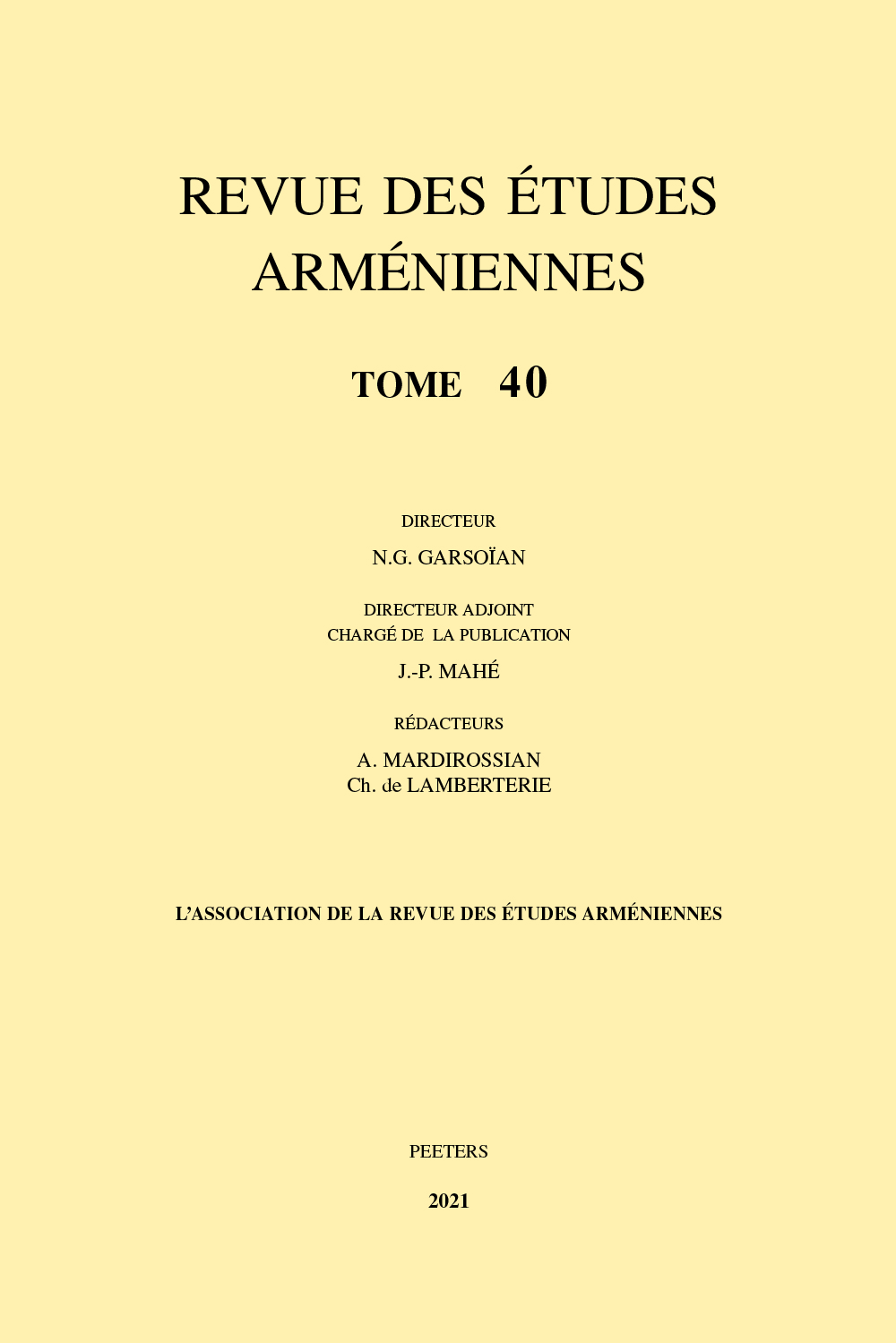 previous article in this issue previous article in this issue | next article in this issue  |

|
Document Details : Title: Coup d'œil sur les titres et les charges de la noblesse arménienne du début de IVe au début du XXe siècle Author(s): DÉDÉYAN, Gérard Journal: Revue des Études Arméniennes Volume: 39 Date: 2020 Pages: 271-286 DOI: 10.2143/REA.39.0.3288974 Abstract : Under the dynasty of the Armenian Arsacids (52-428), and later on at the time of the Marzpans (428-646), one finds, at the head of the Armenian nobiliar hierarchy,the naxarar, theoretically submitted to the king who is, in fact, only a primus inter pares; actually these princes are independent in their hereditary domains, which they possess since immemorial time, unless they have an appointment at the Court. Below the naxarar (or išxan), one finds the azat, receiving a kind of fief in exchange for their services. The Bagratuni house first emerged under Arab domination (654-884/5). At that time, the išxan keep their hereditary estates, but infringements to birthright favour their fractionation. At the time of the kingdoms (from the end of the ninth century to the middle of the twelfth century at the latest), the Bagratid king is still only a «king of kings», as the Arsacid sovereign formerly used to be. The arrival of the Crusaders encouraged the creation of a centralised Armenian state in Cilicia (1073-1375) where the Turkish invasion had expelled part of the Armenians. The feudal regime is introduced under the influence of the Franco legislation of Antioch: the išxan become «barons», who owe to their Cilician suzerain auxilium and consilium. The nobiliary regime of Great Armenia is perpetuated, under Persian rule, among the melik‘, whose links with the ancient išxan are well established, unlike the tetrarchs of Cappadocia and Cilicia, very modest heirs to the kingdom of Cilician Armenia. |
|
